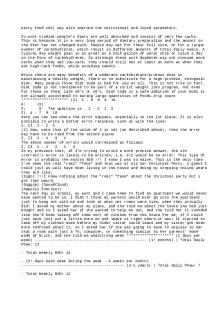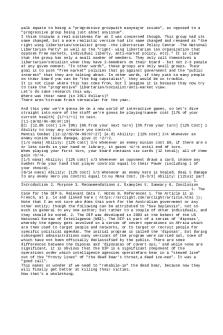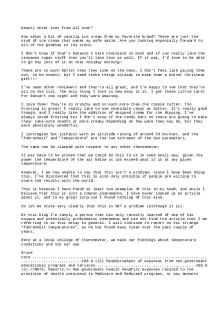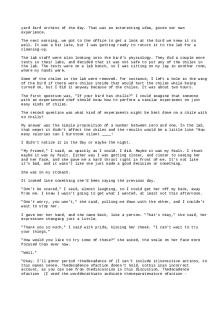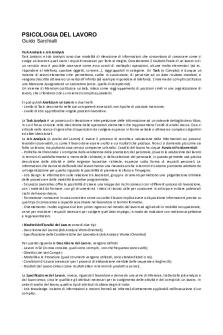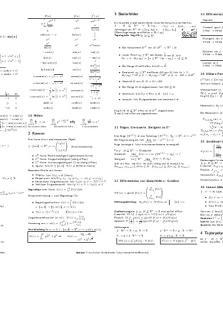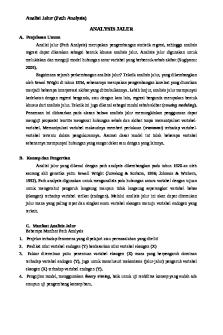LING217-phonemic analysis PDF

| Title | LING217-phonemic analysis |
|---|---|
| Course | Phonetics and Phonology |
| Institution | Macquarie University |
| Pages | 2 |
| File Size | 59.9 KB |
| File Type | |
| Total Downloads | 67 |
| Total Views | 140 |
Summary
Download LING217-phonemic analysis PDF
Description
EXERCISE 1 The words below show the distribution of [k] (voiceless velar stop) and [x] (voiceless velar fricative) in Florentine Italian. Do [k] and [x] belong to different phonemes, or are they allophones of the same phoneme? Provide evidence for your answer. If you conclude they are allophones of the same phoneme, write a phonological rule. ANSWER Florentine Italian Solution Step 1 is to look for minimal pairs. None occur in this data so we move to step 2. Step 2 is to list the environments where each sound occurs: [x]
[k]
a__a
#__w
o__o
#__a
i__o
a__k
i__i
k__i
step 3 is to look for a pattern. Is there anything that all the environments in one list or the other have in common? There is a pattern here, though it is a little different from the one seen in Swahili. Here, both sides of the consonant are relevant: the sound [x] occurs only between vowels. The sound [k] occurs if another consonant precedes or follows, or if the consonant is in word-initial position. analysis: The sounds [x] and [k] are in complementary distribution and are phonetically similar. So they are allophones of the same phoneme in Florentine Italian: [x] occurs between vowels and [k] occurs elsewhere. Because [k] is the elsewhere case, we choose /k/ as the label for the underlying phoneme the phonological rule prose is: the phoneme /k/ is pronounced as the allophone [x] between vowels. The phonological rule with IPA symbols with V as shorthand for ‘any vowel’: /k/ → [x] / V_V EXERCISE 2 In Hungarian do [ɑ] and [a] belong to different phonemes, or are they allophones of the same phoneme? Provide evidence for your answer. If you conclude they are allophones of the same phoneme, write a phonological rule. [ɑɟ] -- brain
[vaɟ] --lust [ɑlmɑ] -- apple [ɑɟː] -- give! [kapolnɑ] -- chapel [harom] --three [kɑtonɑ] -- soldier [en] -- me [tɑkɑroː] -- blanket [kɛrek] -- wheel [kɑnal] -- spoon [neɟ] -- four [vɑɟ] -- are [hɑl] -- fish [haloː] -- net [bɑrat] – friend ANSWER Hungarian Solution [vaɟ] and [vɑɟ] are a minimal pair for [a] and [ɑ]. This is evidence that two the phones belong to separate phonemes, and are not allophones of the same phoneme. So we have both /a/ and /ɑ/ at the phonemic level....
Similar Free PDFs
Popular Institutions
- Tinajero National High School - Annex
- Politeknik Caltex Riau
- Yokohama City University
- SGT University
- University of Al-Qadisiyah
- Divine Word College of Vigan
- Techniek College Rotterdam
- Universidade de Santiago
- Universiti Teknologi MARA Cawangan Johor Kampus Pasir Gudang
- Poltekkes Kemenkes Yogyakarta
- Baguio City National High School
- Colegio san marcos
- preparatoria uno
- Centro de Bachillerato Tecnológico Industrial y de Servicios No. 107
- Dalian Maritime University
- Quang Trung Secondary School
- Colegio Tecnológico en Informática
- Corporación Regional de Educación Superior
- Grupo CEDVA
- Dar Al Uloom University
- Centro de Estudios Preuniversitarios de la Universidad Nacional de Ingeniería
- 上智大学
- Aakash International School, Nuna Majara
- San Felipe Neri Catholic School
- Kang Chiao International School - New Taipei City
- Misamis Occidental National High School
- Institución Educativa Escuela Normal Juan Ladrilleros
- Kolehiyo ng Pantukan
- Batanes State College
- Instituto Continental
- Sekolah Menengah Kejuruan Kesehatan Kaltara (Tarakan)
- Colegio de La Inmaculada Concepcion - Cebu
